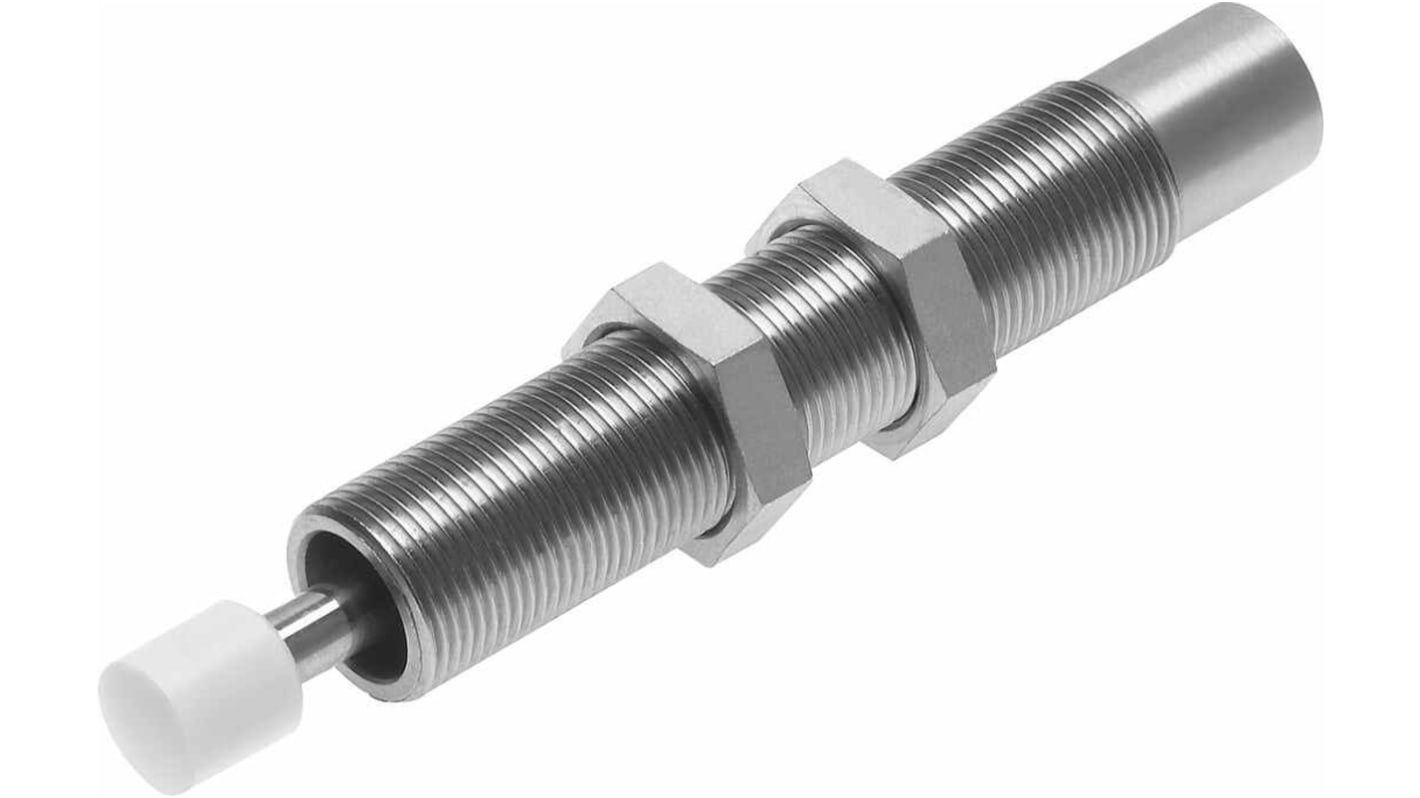Festo Shock Absorber, DYSW-7-10-Y1F, 52.05mm Body Length, M10 Thread Size
- RS Stock No.:
- 202-2922
- Mfr. Part No.:
- DYSW-7-10-Y1F
- Brand:
- Festo

Subtotal (1 unit)*
£86.28
(exc. VAT)
£103.54
(inc. VAT)
FREE delivery for orders over £50.00
In Stock
- Plus 12 unit(s) shipping from 17 November 2025
- Plus 32 unit(s) shipping from 17 November 2025
Need more? Click ‘Check delivery dates’ to find extra stock and lead times.
Units | Per unit |
|---|---|
| 1 + | £86.28 |
*price indicative
- RS Stock No.:
- 202-2922
- Mfr. Part No.:
- DYSW-7-10-Y1F
- Brand:
- Festo
Specifications
Technical Reference
Legislation and Compliance
Product Details
Find similar products by selecting one or more attributes.
Select all | Attribute | Value |
|---|---|---|
| Brand | Festo | |
| Thread Size | M10 | |
| Body Length | 52.05mm | |
| Overall Length | 62.05mm | |
| Connection Type | M10 x 1 | |
| Shock Absorber Type | Shock Absorber | |
| Manufacturer Series | DYSW | |
| Maximum Energy Capacity Per Hour | 15000Nm | |
| Maximum Energy Capacity Per Cycle | 2.5Nm | |
| Minimum Operating Temperature | -10°C | |
| Maximum Operating Temperature | +80°C | |
| Select all | ||
|---|---|---|
Brand Festo | ||
Thread Size M10 | ||
Body Length 52.05mm | ||
Overall Length 62.05mm | ||
Connection Type M10 x 1 | ||
Shock Absorber Type Shock Absorber | ||
Manufacturer Series DYSW | ||
Maximum Energy Capacity Per Hour 15000Nm | ||
Maximum Energy Capacity Per Cycle 2.5Nm | ||
Minimum Operating Temperature -10°C | ||
Maximum Operating Temperature +80°C | ||
- COO (Country of Origin):
- DE
Festo Shock Absorber, 10mm Stroke, 300N Maximum Stop Force - DYSW-7-10-Y1F
This shock absorber from Festo stops fast-moving loads without causing a rebound or transmission of possibly damaging shocks to equipment. It features self-adjusting cushioning with a 10mm length to reduce the internal impact force of the rod and to limit vibrations moving to the rest of the machine. The housing and rod are made of high-alloy steel for reliable strength and long-lasting performance. This device will prevent damage from impact and extend the life of your pneumatic system.
• Stroke size of 10mm for versatile use
• Maximum impact speed of 3m per second allows for powerful impact absorption
• Accommodates single-action pneumatic systems with single ports
• Maximum impact speed of 3m per second allows for powerful impact absorption
• Accommodates single-action pneumatic systems with single ports
Applications
• Robotics industry
• Agriculture
• Manufacturing assembly lines
• Agriculture
• Manufacturing assembly lines
What's the difference between a pneumatic system and a hydraulic system?
Pneumatic systems use gas or air pressure to force the movement of a rod and piston, generating motion. A hydraulic system uses water or fluids instead of gas to achieve the same outcome. Hydraulic systems can generally accommodate greater forces, but because gasses are cleaner, pneumatic systems are often preferred where power can be sacrificed in favour of lower maintenance needs and greater durability.
Related links
- Festo Shock Absorber 77.55mm Body Length, M14 Thread Size
- Festo Shock Absorber 34mm Body Length, M10 Thread Size
- Festo Shock Absorber 66.05mm Body Length
- Festo Shock Absorber 43.1mm Body Length
- Festo Shock Absorber M10 Thread Size
- Festo Shock Absorber, DYSW-4-6-Y1F
- Festo Shock Absorber, DYSW-12-20-Y1F
- SMC Shock Absorber 39mm Body Length, M10 x 1mm Thread Size
